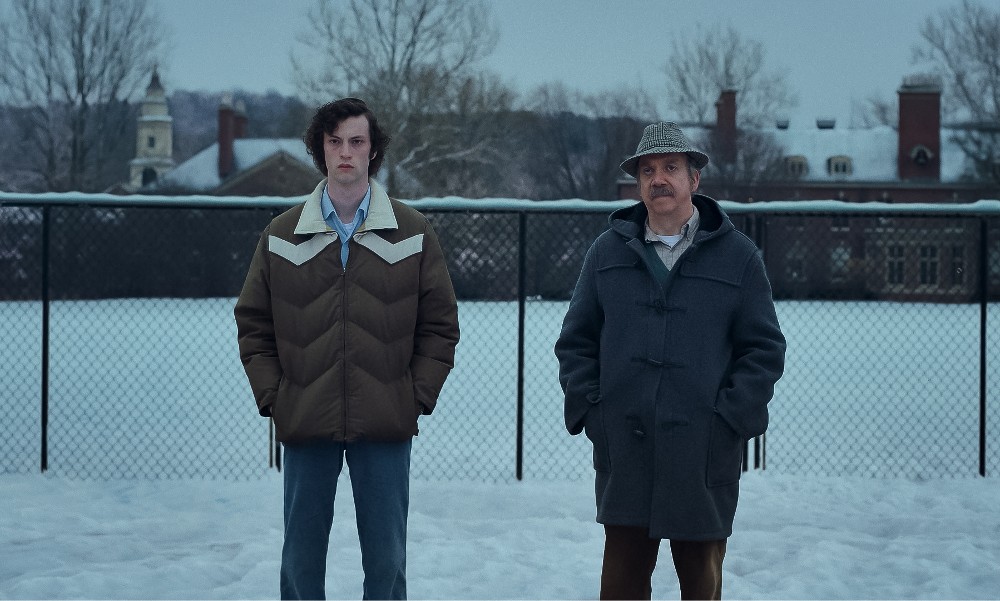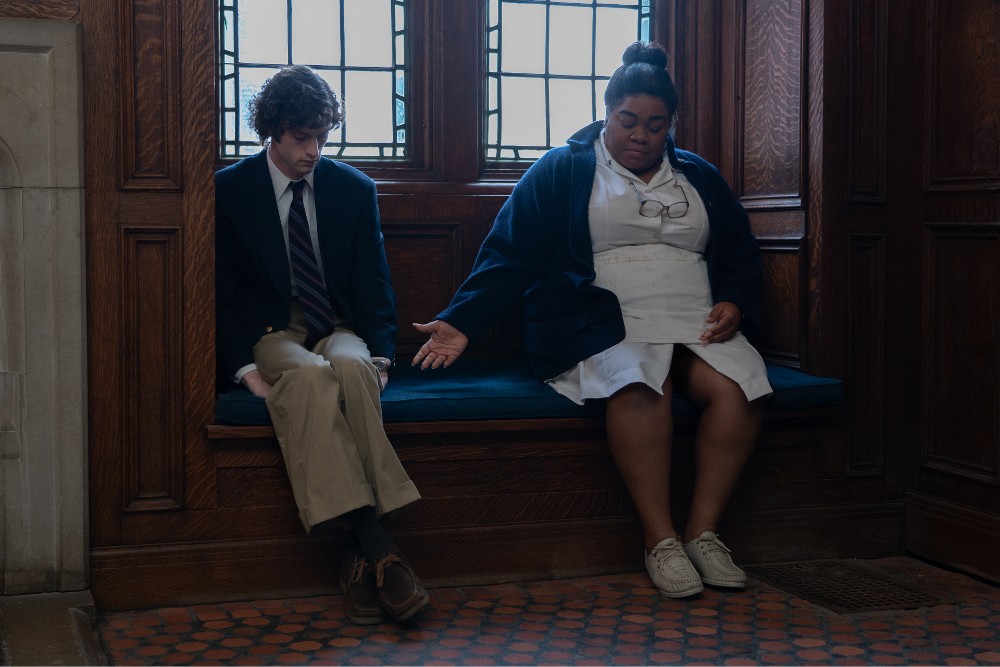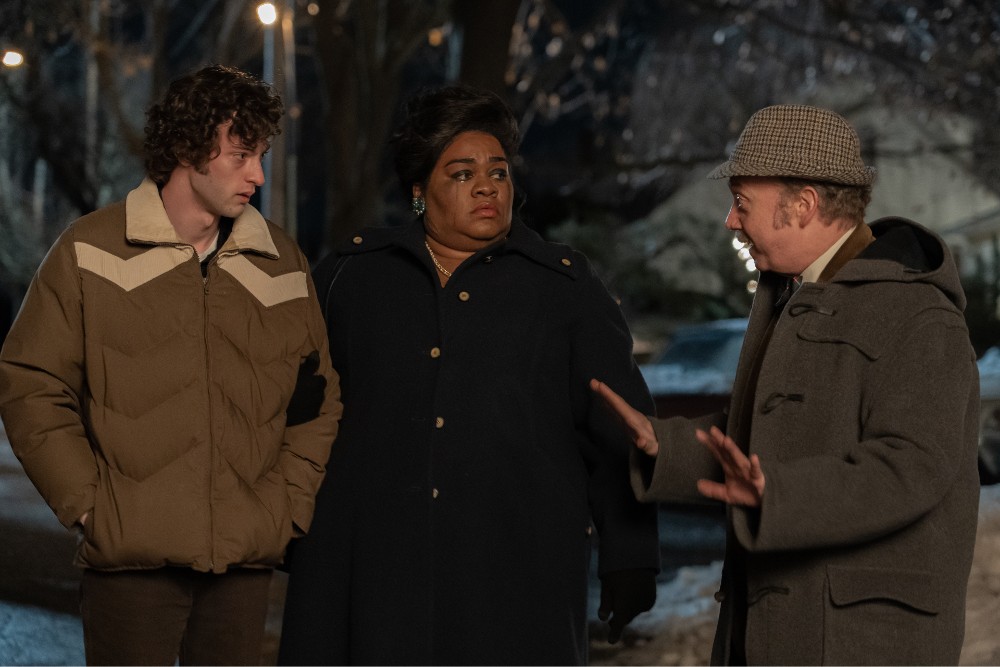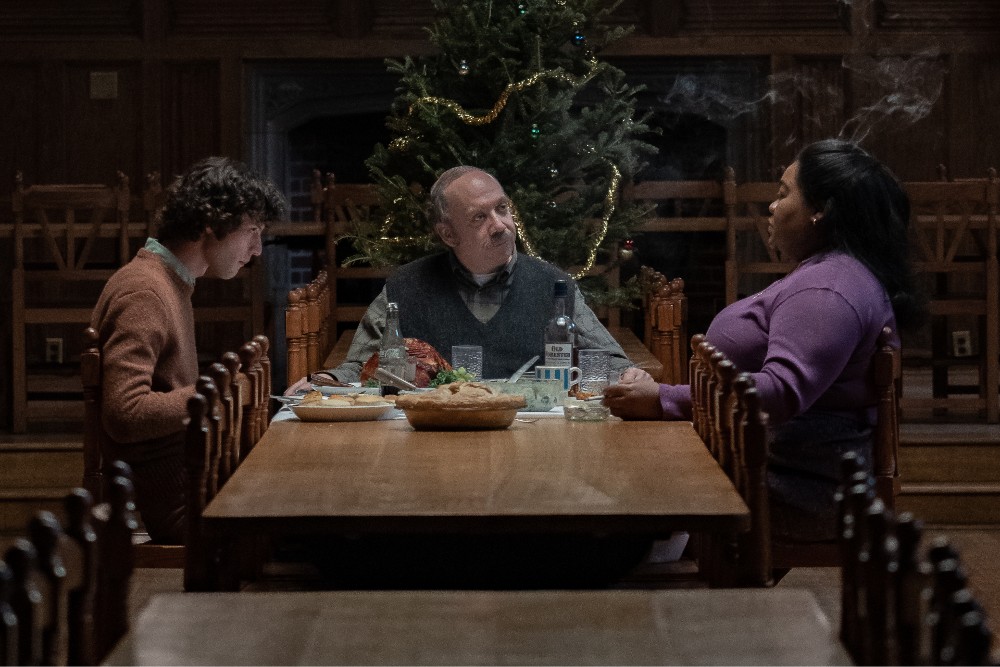
The movie world went gaga for writer-director Alexander Payne after his second movie, Election, and all the accolades came in with the Oscar-winning Sideways. Since then, Payne has felt lost in the sea of his own inventiveness, with movies like The Descendants, Nebraska and Downsizing trying to do too much in the way of family and personal drama, exhibiting overly quirky and therefore unrealistic characters in unrelatable situations.
But Payne devotees need not wait any longer. In the filmmaker’s reunion with Sideways’ Paul Giamatti, The Holdovers, Payne returns to a more basic origin in which he lets the characters develop naturally and therefore more empathetically. Perhaps it helps that he turned over the screenwriting reigns to David Hemingson, after giving him the story idea and keeping his personal touch style behind the camera. The film, which just had its World Premiere at the Telluride Film Festival, is a surefire Oscar contender for Giamatti and others.

The story focuses on curmudgeonly antique history Professor Paul Hunham (Giamatti) and the two weeks he is forced to babysit certain students in his boarding school over the holidays. Principal among them is rebellious but lonely Angus (newcomer Dominic Sessa), a smart but kleptomaniac and compulsively lying student who gives Hunham a run for his money. Also present is Mary, the school’s head cook, played by a sublime Da’Vine Joy Randolph. Other students are forced to stay behind, but the action quickly narrows to this improbable trio, and the movie begins to fire on all cylinders all the way until the credits roll.
Hunham, Angus, and Mary are all fundamentally different people at completely different stages in their lives. Hunham presents as a smart-talking, disdainful educator who uses pejorative but amusing adjectives such as ruffians, truants, and miscreants to describe his unruly students. He appears a lonely man, is a heavy drinker, and has many endearing but also somewhat sad quirks that make him a fully well-rounded, tangible character. Hunham is single, and appears set in the ways of his life, convinced that there are no new human experiences but that to avoid repeating the mistakes of the past (which he fails to do) one most learn from their history. Hunham has, above all, a tremendous level of contempt for the out of touch, privileged elites he teaches, a dislike shared in droves by Hemingson’s script.

Angus, meanwhile, is a troublemaker, on his fourth boarding school, and on the verge of military academy as threatened by his selfish mother. Angus’ mother has recently remarried and decides to go on her honeymoon. She complains of loneliness as the reason to leave her son behind over the holidays. Angus, therefore, is forlorn, rebellious, but also tremendously insecure and anxious that, well, nobody loves him. In some ways, he seems headed in Hunham’s direction, but in others he seems destined for a far more tragic life despite his privilege.
Mary, for her part, is also a lonely woman. Of the three, she is the hardest working, dedicated for over twenty years to be a cook in the school so her son could go there. In the opening sequences, we learn that the son was recently killed in action in Vietnam, further juxtaposing the suffering of the poor versus the escapism of the rich. For obvious reasons, she the more likable character, though not without her own thorns and troubles.
More information about these characters is revealed as the movie goes on, and it would be criminal to spoil any of that here. Suffice it to say that the revelations are neither contrived nor trite. None is particularly earth-shattering, but it is all impeccably constructed because we, the audience, get to know these people as they get to know each other.

Payne and his crew of talented filmmakers, including longtime costume design collaborator Wendy Chuck and production designer Ryan Warren Smith, set the atmosphere in 1970. But the touches are few and sometimes imperceptible, as is the mostly quiet editing by Kevin Tent. But this is a feature, not a bug of The Holdovers.
Like the script itself, the below the line crew does a superb job of not getting in the way of the actors and the relatable, human story at their disposal. So confident they all are in the magnetic force of these three individuals, that they provide ornaments but not cartoons to adorn their behavior.
The Holdovers is a triumph that should resonate with audiences; it has a refreshing feel to it despite the familiarity. The three actors are magnificent, and this is perhaps a career best for Giamatti. The three individuals are relatable, likable, and ultimately much more alike than they may seem at first glance. And it is that slow confession—that we are just imperfect, lonely, loved, unloved, unlovable, and tragic all at the same time—that makes the movie connect. You want to hug each of them, but mostly you want to forgive yourself for your own suffering and imperfections. Rarely is a story about humans this human, and we can only hope more of these authentic stories from Alexander Payne to come.
Grade: A
The Holdovers had its World Premiere at the Telluride Film Festival and will be released by Focus Features in theaters on October 27, 2023.
Twitter: @jdonbirnam
Instagram: @awards_predix





